- Home
- About Us
- Contact Us
- Site Map
- Affiliate Disclosure
- Privacy Policy
- Terms And Conditions
- Best Drone For Beginners 2021 : Top Beginner Drones
- Best Drones 2022 For Beginners : Top Beginner Drone
- Best Drones For Under 100 Dollars That Are Top Easy To Fly
- Best Cheap Drone For Photography : Camera Drones Budget
- What Is The Best Drone For 2022 And How Fast They Go
- Best Drone In The World To Use For Your First Time
- Best Drones 2022 With Camera : Which One Is The Best Drone
- Best Video Drones For Beginners | Features A Beginner Drone
- Dgi Drone
- Best Drone For Night Photography
- Best Drone For The Money
- Best Drone For Teenager
- Best Drone For Under 200
- Best Drone For Under 500
- Best Drone For Video
- Best Drone In The Market
- Best Drone Under 1000
- Best Drones For Travel
- Bird Drone
- Black Hornet Drone
- Deerc Drone
- DJI Drones For Sale
- Dji Fpv Drone
- Dji Mavic 3 Drone
- Drone Dj
Potensic ATOM 3-Axis Gimbal 4K GPS Drone, Under 249g, 96 Mins Flight, Max 6KM Transmission
Long Range Drone : The Power Of Reach Through Autonomous Flight
Also known as a long-endurance drone or a fixed-wing drone, is an unmanned aerial vehicle (UAV) designed to cover large distances and stay airborne for extended periods. These drones are specifically built to have extended flight times and can travel over vast areas, making them ideal for various applications such as aerial surveys, surveillance, mapping, and even delivery services.
Here are some key features and components typically found in long-range drones:
1. Design: Long-range drones are usually designed in a fixed-wing configuration, similar to traditional airplanes. This design enables efficient aerodynamics and better energy consumption compared to multirotor drones (e.g., quadcopters).
2. Wingspan: Long-range drones have a relatively large wingspan, which contributes to their stability and payload capacity. A larger wingspan helps reduce drag and increases lift, allowing for longer flight times.
3. Power Source: These drones are often powered by gasoline or other fuel engines, which provide more energy and endurance compared to batteries alone. However, there are also electric long-range drones available that utilize advanced battery technologies for extended flight times.

4. Payload Capacity: Long-range drones are capable of carrying heavier payloads compared to smaller drones. They can accommodate various equipment such as high-resolution cameras, thermal imaging systems, LiDAR sensors, and even packages for delivery purposes.
5. Navigation and Autonomy: Long-range drones utilize advanced navigation systems, including GPS (Global Positioning System), IMU (Inertial Measurement Unit), and flight controllers, to ensure precise positioning and stable flight. Autopilot features enable the drones to follow pre-programmed flight paths, perform autonomous takeoffs and landings, and execute missions with minimal human intervention.

6. Communication and Control: Long-range drones typically use radio frequencies to establish communication between the drone and the ground control station. This allows operators to monitor the drone's status, receive telemetry data, and issue commands during the flight.
7. Flight Time and Range: Long-range drones are capable of flying for several hours, typically ranging from 4 to 12 hours, depending on factors such as payload weight, fuel capacity, and engine efficiency. The range of these drones can vary widely, with some models capable of covering distances up to hundreds of kilometers.

It's important to note that the exact specifications and capabilities of long-range drones can vary between different models and manufacturers. The technology in this field is constantly evolving, and newer advancements may introduce even longer flight times, extended ranges, and enhanced features.
Long Range Drone : Which Drone Has Longest Range ?
As of my knowledge cutoff in September 2021, the drone with the longest range available commercially is the General Atomics MQ-9 Reaper. The MQ-9 Reaper is an unmanned aerial vehicle (UAV) primarily used by the United States Air Force and other military organizations. It is designed for long-endurance missions and can stay airborne for up to 27 hours.
Here are some key details about the MQ-9 Reaper:
1. Range: The MQ-9 Reaper has an operational range of over 1,000 nautical miles (1,850 kilometers). It allows the drone to cover vast distances and conduct missions far from its takeoff point.
2. Endurance: With a flight endurance of up to 27 hours, the Reaper can remain in the air for an extended period. This long flight time is achieved by using a heavy-fuel engine that allows the drone to conserve fuel and optimize efficiency.

3. Payload Capacity: The Reaper has a considerable payload capacity of up to 3,850 pounds (1,750 kilograms). It can carry a variety of mission-specific equipment, including multiple sensors, cameras, and weapons systems.
4. Communication and Control: The MQ-9 Reaper utilizes a satellite data link to establish communication between the drone and the ground control station. This allows operators to remotely control the drone and receive real-time video feeds and sensor data.
5. Mission Capabilities: The Reaper is primarily used for intelligence, surveillance, and reconnaissance (ISR) missions. It can gather valuable intelligence by capturing high-resolution imagery, conducting surveillance operations, and monitoring areas of interest for extended periods.

6. Weaponization: The MQ-9 Reaper can be armed with various weapons, including precision-guided munitions such as Hellfire missiles and laser-guided bombs. This capability allows the drone to engage targets accurately and provide support for ground forces if needed.
It's worth mentioning that the MQ-9 Reaper is primarily used for military purposes and is not available for civilian use. However, the drone industry is continuously evolving, and new models with extended ranges and flight times may become available in the future.
It's always recommended to check the latest developments and offerings from drone manufacturers to find the most up-to-date information on long-range drones.
What's The Longest Distance A Drone Can Fly ?
The longest distance a drone can fly depends on various factors, including its design, power source, payload, and regulatory restrictions. As of my knowledge cutoff in September 2021, there are drones capable of flying distances of over 10,000 kilometers (6,214 miles) without refueling or battery recharge. Here are a few examples:

1. Solar-Powered Drones: Solar-powered drones have the potential for extremely long-distance flights. These drones are equipped with solar panels on their wings or body, which harness solar energy to power the onboard systems and recharge the batteries. By continuously harvesting solar energy, these drones can theoretically fly for an indefinite period, as long as sunlight is available.
2. Fixed-Wing Drones: Fixed-wing drones, especially those designed for long-range operations, can cover significant distances. With efficient aerodynamics and fuel-powered engines, these drones can fly for several hours and travel hundreds or even thousands of kilometers before needing to refuel.
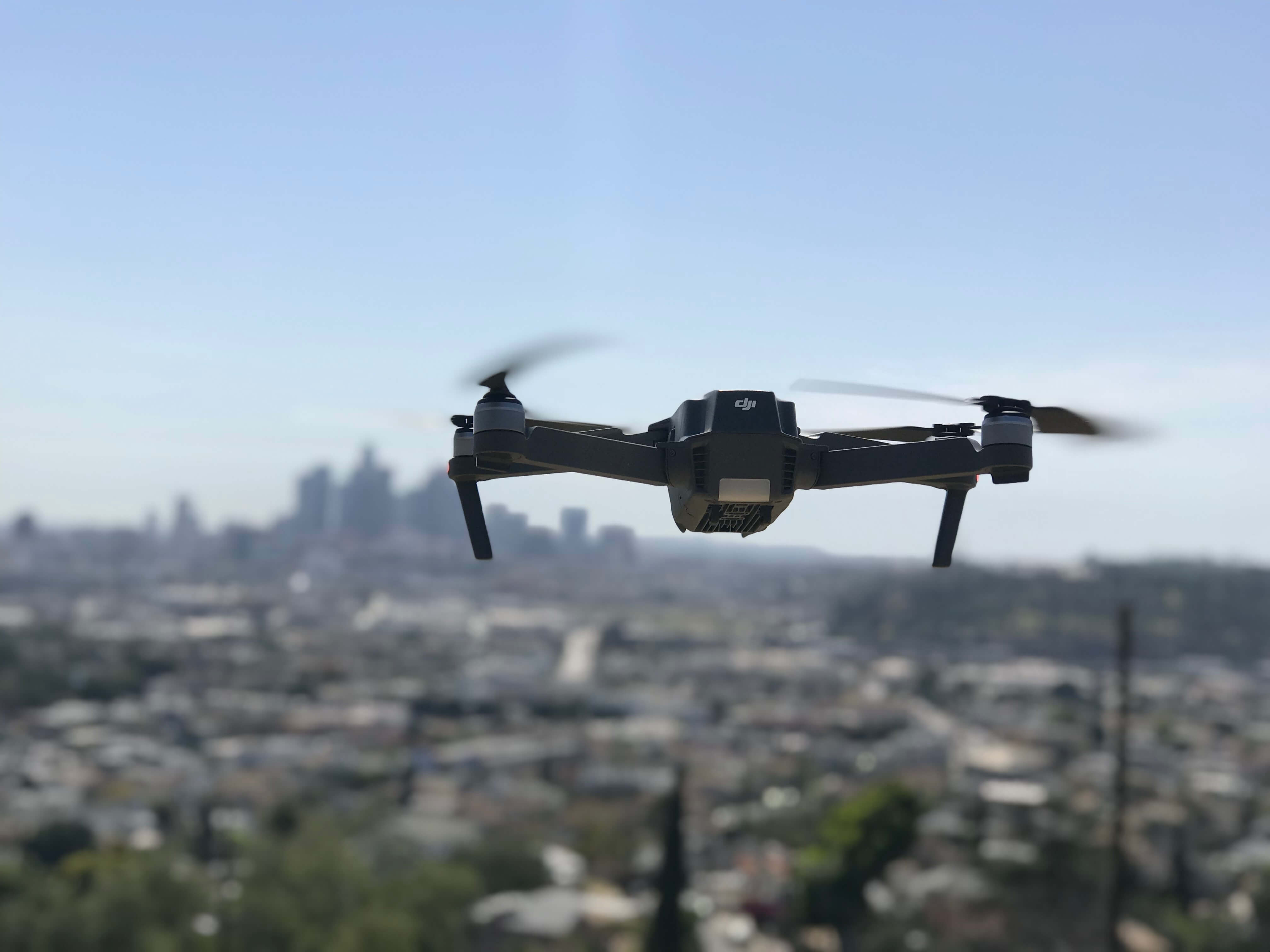
3. High-Altitude Long Endurance (HALE) Drones: HALE drones are designed to operate at high altitudes, typically above 60,000 feet (18,000 meters). Their long wingspan, lightweight construction, and efficient engines enable them to stay aloft for extended periods. HALE drones, such as the General Atomics MQ-9 Reaper, have operational ranges of over 1,000 nautical miles (1,850 kilometers).
4. Gasoline or Hybrid-Powered Drones: Drones powered by gasoline or hybrid systems can achieve longer flight distances compared to battery-powered drones. Gasoline-powered drones can carry a larger fuel load, enabling them to cover greater distances. Hybrid drones combine both fuel and battery power, providing a balance between flight time and range.
It's important to note that regulatory restrictions play a significant role in determining the maximum distance a drone can fly. Aviation authorities and local regulations often impose limits on drone flight ranges, requiring operators to maintain visual line-of-sight or obtain special permissions for beyond-visual-line-of-sight (BVLOS) operations. These regulations are in place to ensure safety, prevent interference with manned aircraft, and maintain control over airspace.
Furthermore, technological advancements and the introduction of new drone models can potentially extend the maximum flight distances. It's always advisable to consult the specific capabilities and specifications of the drone model you are interested in, as manufacturers may introduce advancements that push the boundaries of range and endurance.
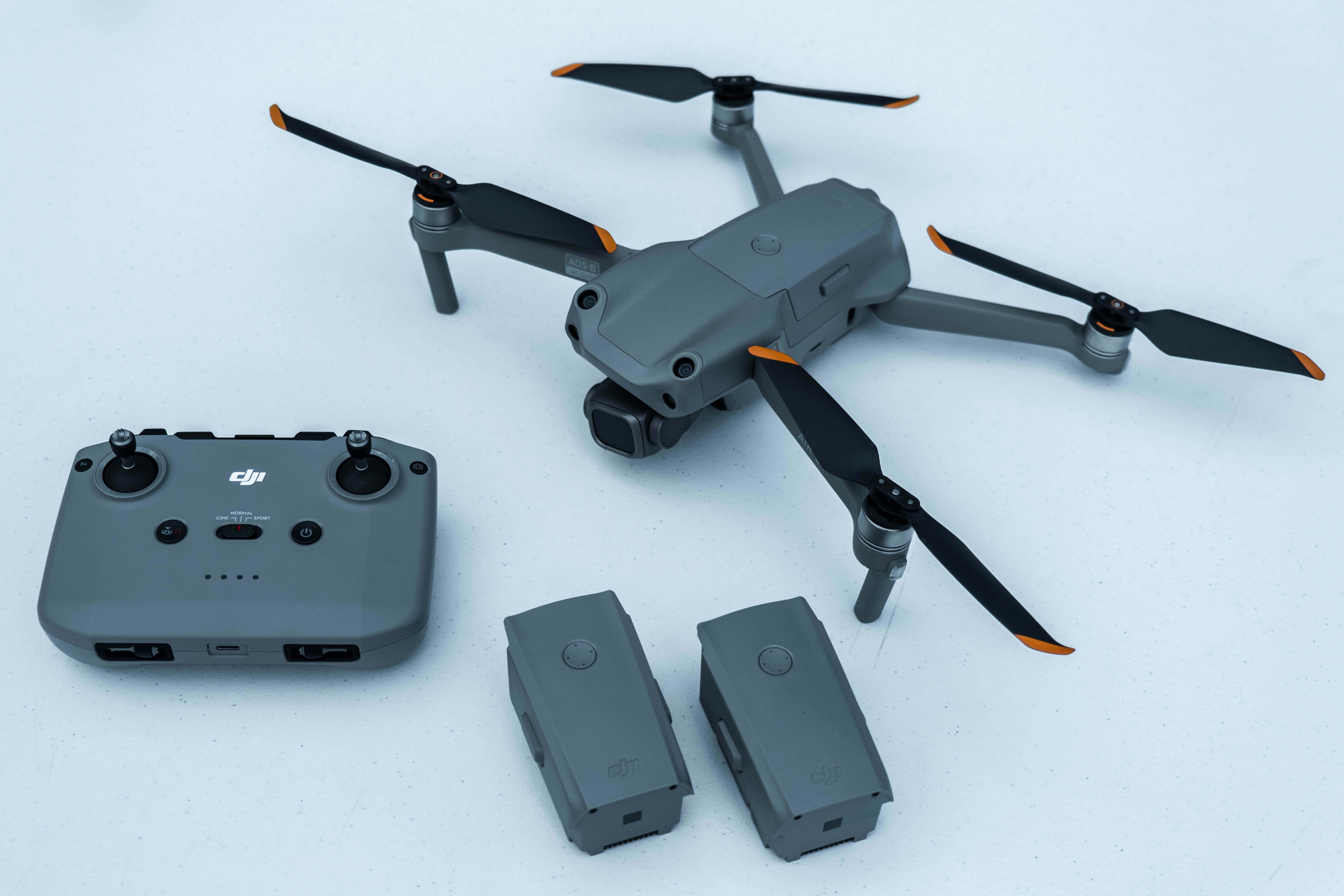
Can A Drone Fly 500 Miles ?
Yes, there are drones available that can fly 500 miles (805 kilometers) or more in a single flight. However, it's important to consider several factors that can affect the actual achievable distance:
1. Drone Type: Fixed-wing drones are more suitable for long-range flights compared to multirotor drones. Fixed-wing drones have higher energy efficiency and can cover larger distances with the same amount of energy. Multirotor drones, such as quadcopters, are designed for shorter flights and have limited range.
2. Power Source: The power source of the drone plays a crucial role in determining its flight range. Gasoline-powered drones typically have longer flight ranges compared to battery-powered ones. Hybrid drones that combine fuel and battery power can also achieve extended flight distances.
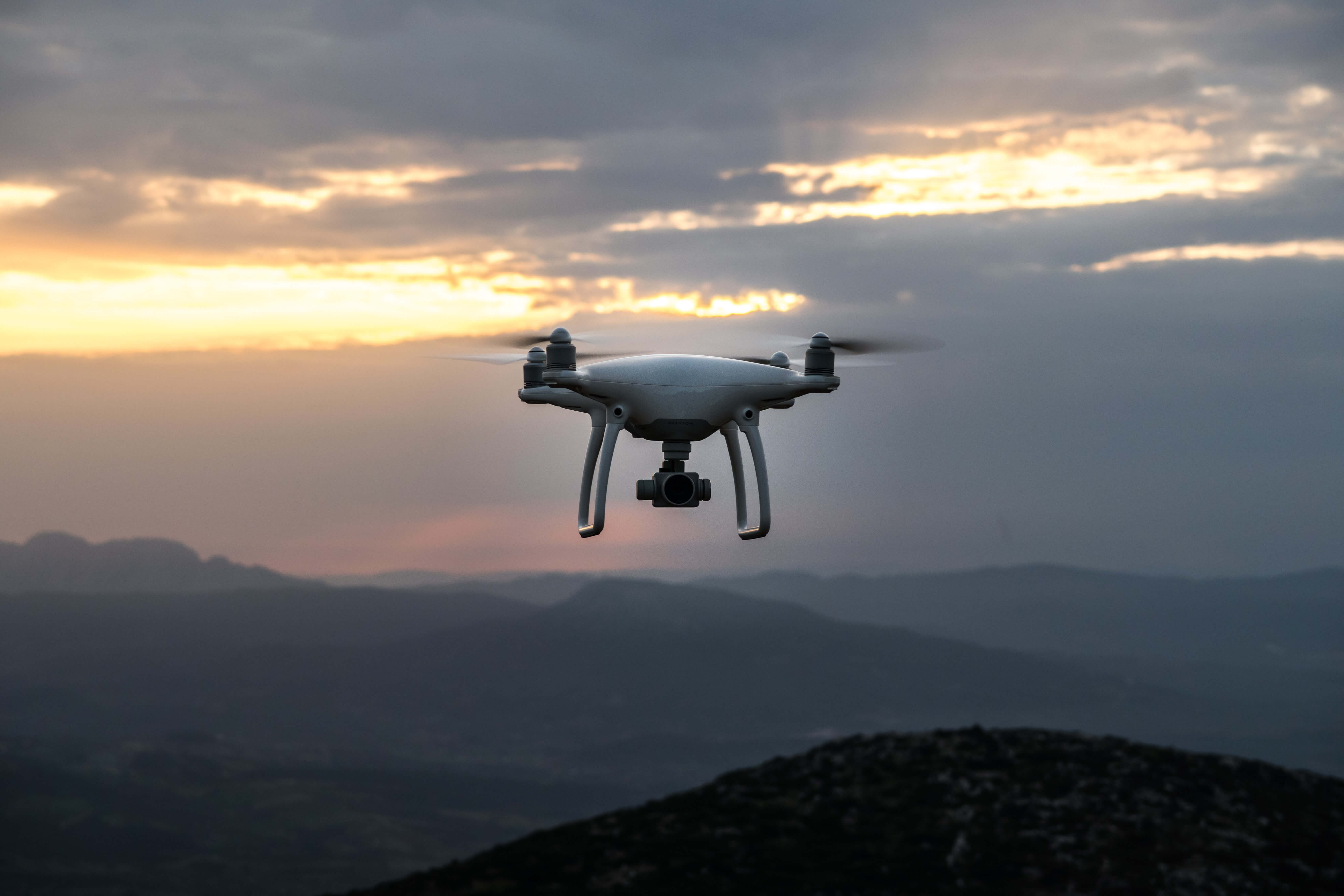
3. Payload and Weight: The payload carried by the drone affects its flight performance. Heavier payloads can reduce the drone's range as they consume more energy. For longer flights, it is essential to consider the payload weight and its impact on the drone's endurance.
4. Regulatory Restrictions: Regulatory restrictions imposed by aviation authorities may limit the range of drone flights. Depending on the location and the specific regulations in place, drones may be subject to visual line-of-sight requirements or other operational limitations that affect their maximum flight distance.

5. Environmental Conditions: Environmental factors such as wind speed, temperature, and altitude can influence a drone's range. Strong headwinds can increase energy consumption, reducing the drone's effective range. Higher altitudes may require adjustments in flight parameters due to thinner air and decreased lift.
6. Battery Life and Recharge: Battery-powered drones have limited flight durations due to battery capacity and energy consumption. While some drones claim longer flight times, they may need to recharge or change batteries during a 500-mile flight, which would affect the overall journey duration and logistics.
It's worth noting that long-range flights require careful planning, monitoring, and adherence to local regulations. Pilots must consider factors such as airspace restrictions, navigation, communication, and safety measures to ensure a successful and compliant flight.
As technology advances, the capabilities of drones continue to improve, and new models with longer flight ranges may become available. It's recommended to consult the specifications of specific drone models and review their capabilities to determine if they can achieve a 500-mile flight.

Can You Fly Over 400 Feet With A Drone ?
In many countries, including the United States, drone regulations generally restrict flights above 400 feet (121 meters) in altitude. However, it's important to note that regulations may vary between different jurisdictions, so it's essential to consult the specific rules and regulations in your location before operating a drone.
Here is some information regarding the 400-feet altitude limit for drones:
1. United States: In the United States, the Federal Aviation Administration (FAA) regulates drone operations. According to FAA regulations for recreational drone pilots, drones are generally not allowed to fly above 400 feet in uncontrolled airspace. This altitude limit is in place to maintain safety and prevent conflicts with manned aircraft.
2. Part 107 Commercial Operations: If you are operating a drone for commercial purposes in the United States under FAA Part 107 regulations, the altitude limit is also set at 400 feet above ground level (AGL) unless you receive a waiver from the FAA for specific operations.

3. Exceptions and Waivers: In some cases, waivers can be obtained from the FAA to fly drones above 400 feet for certain purposes, such as aerial surveys, inspections of tall structures, or other specialized operations. These waivers typically require additional safety measures, risk assessments, and coordination with air traffic control.
4. Visual Line-of-Sight (VLOS) Requirement: Even within the altitude limit, most regulations also require drone pilots to maintain visual line-of-sight with the aircraft at all times. This means that you must be able to see your drone with unaided vision while operating it.
It's crucial to familiarize yourself with the specific rules and regulations set by the aviation authority in your country or region. Drone operators must comply with these regulations to ensure safety, prevent airspace conflicts, and avoid potential legal consequences.
Remember that these regulations are subject to change and updates, so it is essential to stay informed about the latest regulations and consult the appropriate authorities or local aviation organizations for the most up-to-date information.
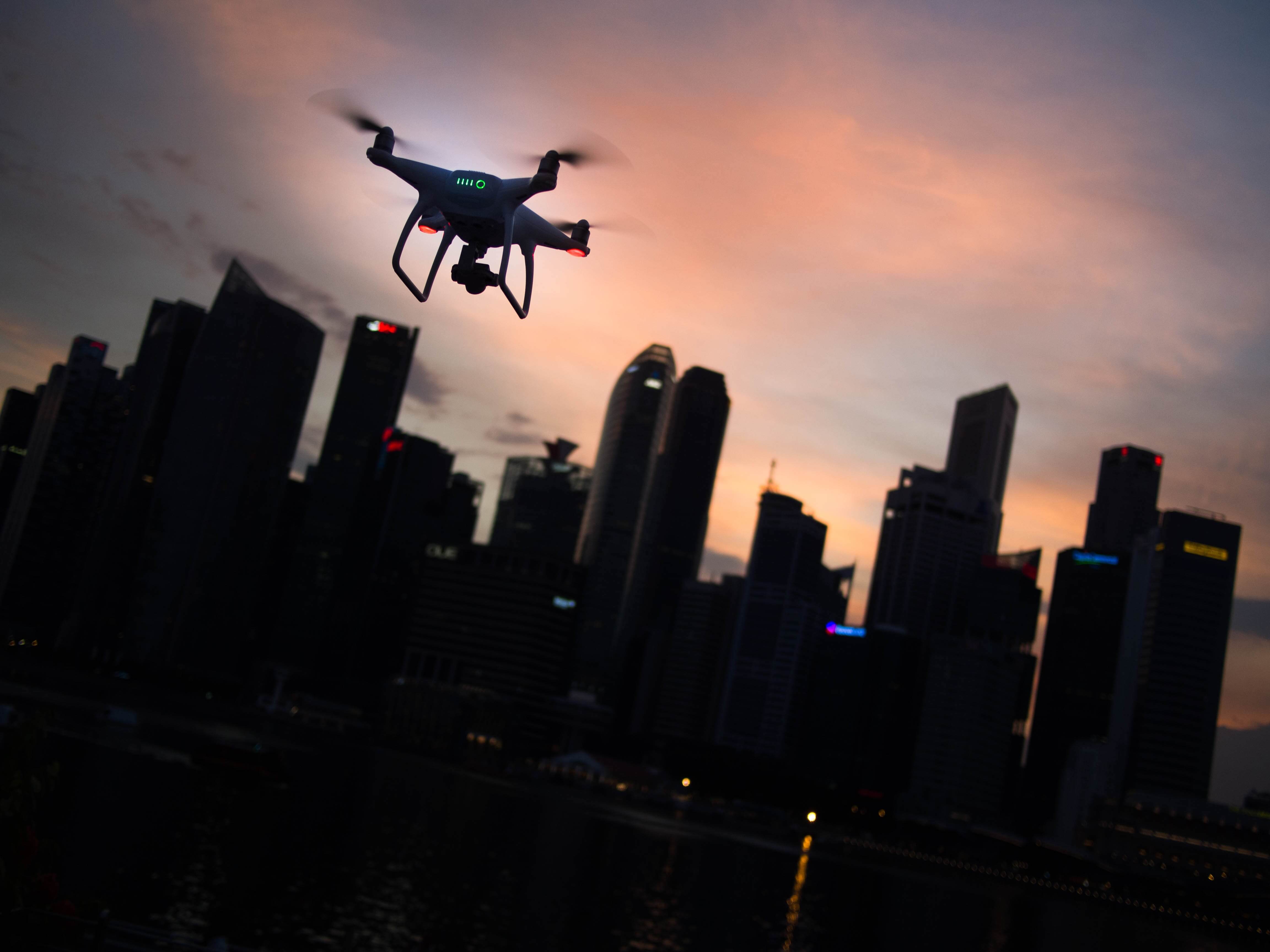
Can You Fly Drone 600 Ft ?
In most countries, including the United States, drone regulations generally restrict flights above 400 feet (121 meters) in altitude for recreational and commercial drone operations. However, it's important to consult the specific rules and regulations in your location as regulations can vary.
Regarding flying a drone at 600 feet (183 meters), it would generally be considered a violation of regulations unless you have obtained a waiver or authorization from the relevant aviation authority.
Here is some information regarding the altitude limits for drone flights:
1. United States: In the United States, the Federal Aviation Administration (FAA) regulates drone operations. For recreational drone pilots, the altitude limit is generally set at 400 feet above ground level (AGL) in uncontrolled airspace. For commercial operations under FAA Part 107, the same altitude limit applies unless a specific waiver has been obtained.

2. Exceptions and Waivers: In certain cases, you may be able to obtain a waiver or authorization from the FAA or other relevant authority to fly a drone above 400 feet. These waivers typically require a detailed application process, including demonstrating the need for the higher altitude, providing safety mitigation measures, and coordinating with air traffic control.
3. Specific Operations: There may be specific cases, such as certain industrial or research applications, where operations above 400 feet are allowed under certain conditions. These cases often require specific permissions, approvals, or exemptions from the aviation authority.

4. Safety Considerations: Drone operators must always prioritize safety during flight operations. Flying at higher altitudes increases the risk of potential conflicts with manned aircraft and other airspace users. It is essential to assess the risks, consider the local airspace environment, and take appropriate safety measures when flying a drone.
Remember that drone regulations can vary between countries and regions, and they are subject to change. It's crucial to familiarize yourself with the specific rules and regulations set by the aviation authority in your location and adhere to them to ensure safety, prevent airspace conflicts, and comply with the law.
Always consult the appropriate authorities or local aviation organizations for the most up-to-date information on drone regulations and altitude limits in your area.

Can A Drone Fly At 3000 Feet ?
In most countries, operating a drone at an altitude of 3,000 feet (914 meters) would typically exceed the legal limits and regulations set for recreational and commercial drone operations. It's important to consult the specific rules and regulations in your location, as regulations can vary between countries and regions.
Here is some general information regarding altitude limits for drone flights:
1. United States: In the United States, the Federal Aviation Administration (FAA) regulates drone operations. For recreational drone pilots, the altitude limit is generally set at 400 feet above ground level (AGL) in uncontrolled airspace.
For commercial operations under FAA Part 107, the same altitude limit applies unless a specific waiver has been obtained. Operating a drone at 3,000 feet would exceed these limits unless authorized by a waiver or specific permission from the FAA.
2. Other Countries: Different countries have their own aviation authorities and regulations governing drone operations. Most countries have altitude limits in place to ensure the safety of manned aircraft, prevent airspace conflicts, and protect national security. These limits generally range between 100-400 feet above ground level, but they can vary depending on the country and specific airspace restrictions.

3. Exceptions and Authorizations: In certain cases, exceptions or authorizations may be granted for specific operations or circumstances. These may include specialized industrial or research applications, public safety operations, or other scenarios where higher altitudes are required. However, such exceptions typically require a thorough application process, coordination with aviation authorities, and the demonstration of safety mitigations.
4. Safety and Considerations: Operating a drone at high altitudes significantly increases the risk of conflicts with manned aircraft and other airspace users. It is crucial to prioritize safety, follow regulations, and assess the potential risks and hazards associated with flying at higher altitudes.

It's essential to stay informed about the specific regulations and guidelines provided by the aviation authority in your country or region. Always consult the appropriate authorities or local aviation organizations to ensure compliance with the applicable regulations, maintain safety, and prevent potential legal consequences.
How High Can A Police Drone Fly ?
The maximum altitude at which a police drone can fly depends on various factors, including the specific regulations and guidelines set by the country or jurisdiction, the type of drone being used, and the operational requirements of the law enforcement agency. Here is some general information regarding the altitude limits for police drone operations:
1. Country-Specific Regulations: Each country has its own aviation authority that governs drone operations, including those conducted by law enforcement agencies. These regulations may set specific altitude limits that apply to police drones. It is crucial for law enforcement agencies to adhere to these regulations to ensure compliance and safety.
2. Civil Aviation Authority Authorization: In many countries, law enforcement agencies are required to obtain specific authorization or exemptions from the civil aviation authority to operate drones beyond certain altitude limits. This may involve demonstrating the need for higher altitude operations, providing safety protocols, and coordinating with air traffic control.

3. Operational Considerations: The altitude at which police drones are flown is determined by the specific operational requirements. Police drones are typically used for activities such as surveillance, search and rescue, traffic monitoring, and event management. The altitude chosen for a specific operation depends on factors such as the area being monitored, the intended purpose, and the need for situational awareness.
4. Safety and Airspace Integration: Law enforcement agencies must prioritize safety when operating drones. Flying at higher altitudes increases the risk of conflicts with manned aircraft. Therefore, coordination with air traffic control and other relevant authorities is crucial to ensure the safe integration of police drones within the airspace.
It is important to note that the specific altitude limits for police drones can vary between jurisdictions and may be subject to change. Law enforcement agencies must stay updated on the regulations and guidelines provided by the aviation authority in their country or region. They should consult with the appropriate authorities to ensure compliance with the rules and to obtain any necessary authorizations or exemptions for specific operational requirements.

Can A Drone Be Seen On Radar ?
Yes, drones can be detected and seen on radar under certain conditions. Radar (Radio Detection and Ranging) is a technology that uses radio waves to detect and track objects in the airspace. While small drones may have a smaller radar signature and can be more challenging to detect compared to larger aircraft, there are radar systems specifically designed to detect and track drones. Here are some key points regarding drones and radar:
1. Radar Detection: Radar systems can detect drones by analyzing the reflected radio waves from the drone's structure, including its body, propellers, and other components. The radar system emits radio waves, which bounce off the drone and return to the radar receiver, allowing it to detect the presence and position of the drone.
2. Drone Size and Radar Signature: The size and material composition of the drone can impact its radar signature. Larger drones with metal or reflective surfaces generally have a larger radar signature, making them easier to detect. Smaller drones made of lightweight materials such as carbon fiber or plastic may have a smaller radar signature, making them more difficult to detect on radar.
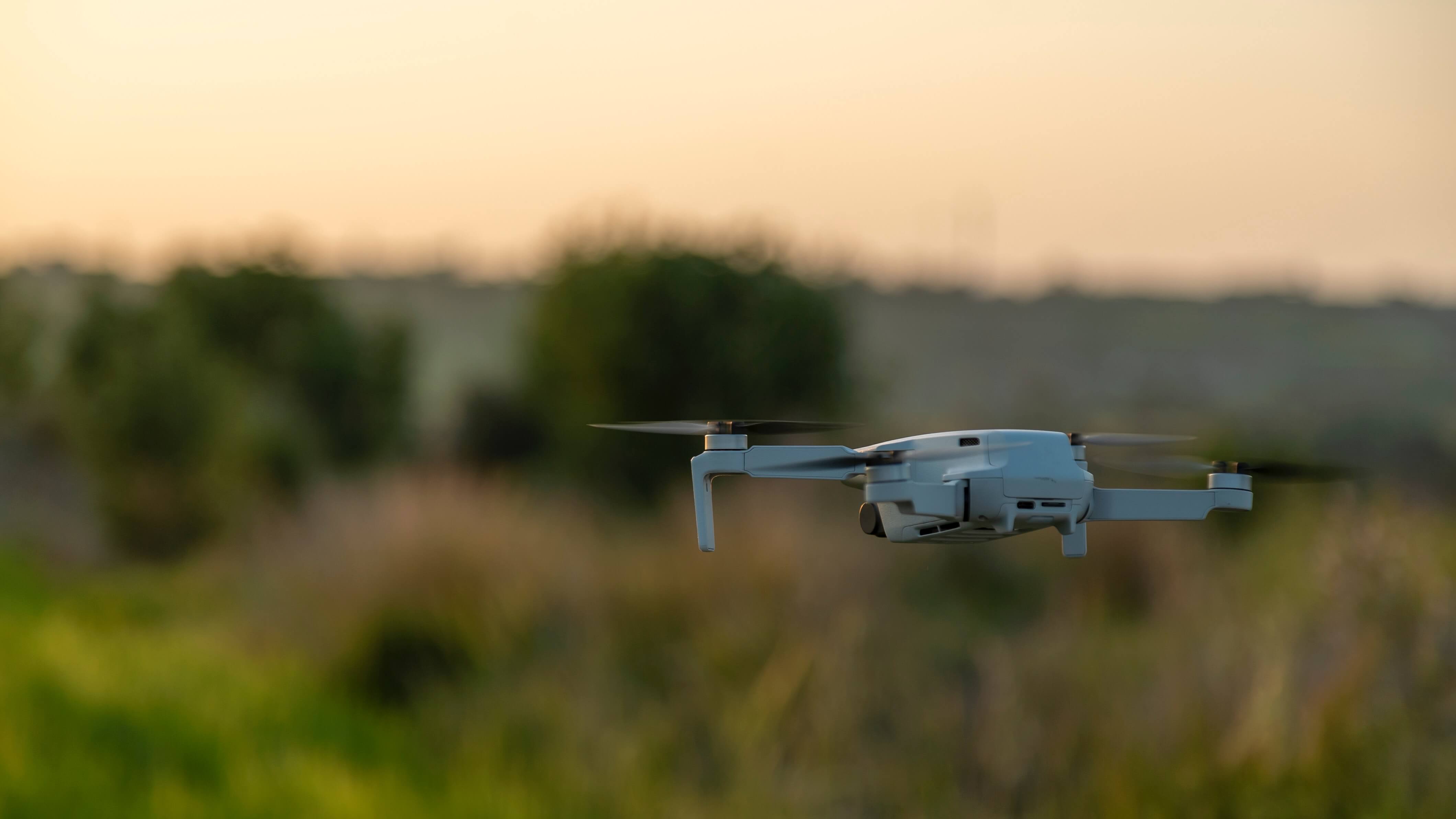
3. Radar Systems for Drone Detection: To specifically detect and track drones, specialized radar systems have been developed. These systems often use advanced radar technologies, such as Doppler radar, frequency-modulated continuous wave (FMCW) radar, or phased array radar. These systems are designed to detect small and low-flying objects like drones more effectively.
4. Challenges and Limitations: Detecting drones on radar can be challenging due to their small size, low altitude, and slower speeds compared to traditional aircraft. Additionally, clutter from other objects, such as buildings or trees, and environmental conditions such as weather can impact the radar's effectiveness in detecting drones.
5. Integrated Systems: In some cases, radar is used in combination with other sensor technologies, such as cameras, thermal imaging, or acoustic sensors, to enhance drone detection capabilities. These integrated systems can provide a more comprehensive approach to drone detection, combining multiple data sources for improved accuracy.

It's important to note that the ability to detect drones on radar varies depending on the specific radar system, its capabilities, and the size and operating characteristics of the drone. Advances in radar technology and the development of specialized systems continue to improve drone detection capabilities.
Law enforcement, military, and aviation authorities may employ radar systems to detect unauthorized or potentially hazardous drone activities. However, it's worth noting that not all drones may be detectable by radar, particularly small and low-flying recreational drones.
What Can Fly At 60000 Feet ?
Several types of aircraft can fly at 60,000 feet (18,288 meters) or higher, typically categorized as high-altitude or stratospheric aircraft. Here are some examples:
1. High-Altitude Reconnaissance Aircraft: Reconnaissance aircraft, such as the Lockheed U-2 and Northrop Grumman RQ-4 Global Hawk, are designed to operate at high altitudes for surveillance and intelligence-gathering purposes. These aircraft can fly at altitudes above 60,000 feet, allowing them to capture high-resolution imagery and gather data over vast areas.
2. High-Altitude Long Endurance (HALE) Drones: HALE drones, like the General Atomics MQ-9 Reaper or the Northrop Grumman RQ-4 Global Hawk mentioned earlier, are designed for extended flights at high altitudes. These drones can operate above 60,000 feet, providing long-endurance surveillance, reconnaissance, and other mission capabilities.

3. High-Altitude Research Aircraft: Scientific research aircraft, such as NASA's ER-2 and the DLR (German Aerospace Center) HALO, are capable of flying at extreme altitudes for atmospheric research, climate studies, and other scientific investigations. These aircraft often reach altitudes well above 60,000 feet to access the upper troposphere and lower stratosphere.
4. Experimental Aircraft: Some experimental or specialized aircraft, such as the Perlan II glider, are designed to achieve extremely high altitudes. The Perlan II, for instance, is designed to reach altitudes of up to 90,000 feet (27,432 meters) to study the Earth's upper atmosphere and conduct scientific research.
5. Supersonic Aircraft: Certain supersonic aircraft, like the legendary Lockheed SR-71 Blackbird, are capable of flying at altitudes exceeding 60,000 feet. The SR-71 was designed for high-altitude reconnaissance missions and held various altitude and speed records.

It's worth noting that the ability to fly at high altitudes requires specialized aircraft designs, advanced engines, and specific operational considerations. High-altitude flight presents unique challenges, including lower air density, extreme temperatures, and limited oxygen availability, necessitating the use of pressurized cabins or specialized pilot equipment.
The specific altitude capabilities of aircraft can vary depending on factors such as design, purpose, and technological advancements. Advances in aerospace technology continue to push the boundaries of high-altitude flight, enabling aircraft to operate at even more extreme altitudes for various missions and research endeavors.
How Do I Stop Drones From Flying Over My House ?
If you are concerned about drones flying over your house and wish to prevent or mitigate such occurrences, here are some measures you can consider:
1. Familiarize Yourself with Local Regulations: Research and understand the laws and regulations regarding drone operations in your country, state, or local area. Familiarize yourself with any restrictions on drone flights, such as flying near airports, over private properties, or above certain altitudes.

2. Communicate with Local Authorities: Reach out to your local law enforcement agency or aviation authority to report any concerning drone activities and seek guidance on addressing the issue. They can provide information on the applicable regulations and advise you on the appropriate steps to take.
3. Establish Property Boundaries: Clearly mark your property boundaries with signs or fences to inform drone operators that they are entering private property. Although this may not physically prevent drones from flying over your house, it can serve as a visual deterrent and potentially discourage drone operators from flying in the vicinity.
4. Communication with Drone Operators: If you identify a drone operator flying over your property and you know their identity or have a line of communication, consider respectfully and calmly communicating your concerns. Many drone operators are hobbyists or enthusiasts who may not be aware of the potential intrusion or disturbance they are causing.

5. Explore Technological Solutions: There are various technological solutions available that can help detect and mitigate unwanted drone activities. These include:
• Drone Detection Systems: These systems utilize technologies such as radar, radio frequency (RF) detection, and visual identification to detect nearby drones. They can provide real-time alerts when a drone is detected, enabling you to take appropriate action.
• Drone Jammers: Drone jammers emit signals that disrupt drone control and GPS navigation systems, effectively forcing the drone to land or return to its operator. However, it's important to note that the use of drone jammers may be illegal in some jurisdictions, and their use can have unintended consequences and affect other legitimate devices operating on similar frequencies.

• Drone Countermeasures: Certain systems deploy nets, lasers, or other physical means to intercept and capture or disable drones. These countermeasures are often used in critical infrastructure protection or high-security scenarios and may require specialized expertise.
6. Document and Report Incidents: Keep a record of any instances where you observe drones flying over your property without authorization. Document details such as dates, times, descriptions, and any identifiable information about the drone or operator. Report these incidents to the appropriate authorities, providing them with the necessary evidence for further investigation or action.

It's important to note that the effectiveness and legality of certain countermeasures and technological solutions may vary based on your jurisdiction. Always consult local regulations and seek legal advice to ensure you are taking appropriate and lawful measures to address your concerns.
What Can Fly At 80000 Feet ?
Flying at 80,000 feet (24,384 meters) requires specialized aircraft designed for high-altitude operations. Here are a few examples of aircraft that are capable of reaching or exceeding this altitude:
1. High-Altitude Reconnaissance Aircraft: The Lockheed U-2, an iconic reconnaissance aircraft, is capable of flying at altitudes exceeding 80,000 feet. Originally developed for high-altitude Cold War surveillance, the U-2 continues to be used for strategic reconnaissance missions.
2. High-Altitude Research Aircraft: Some scientific research aircraft, such as the NASA ER-2, can reach altitudes of around 80,000 feet. These aircraft are specifically designed for atmospheric research, climate studies, and data collection in the upper troposphere and lower stratosphere.
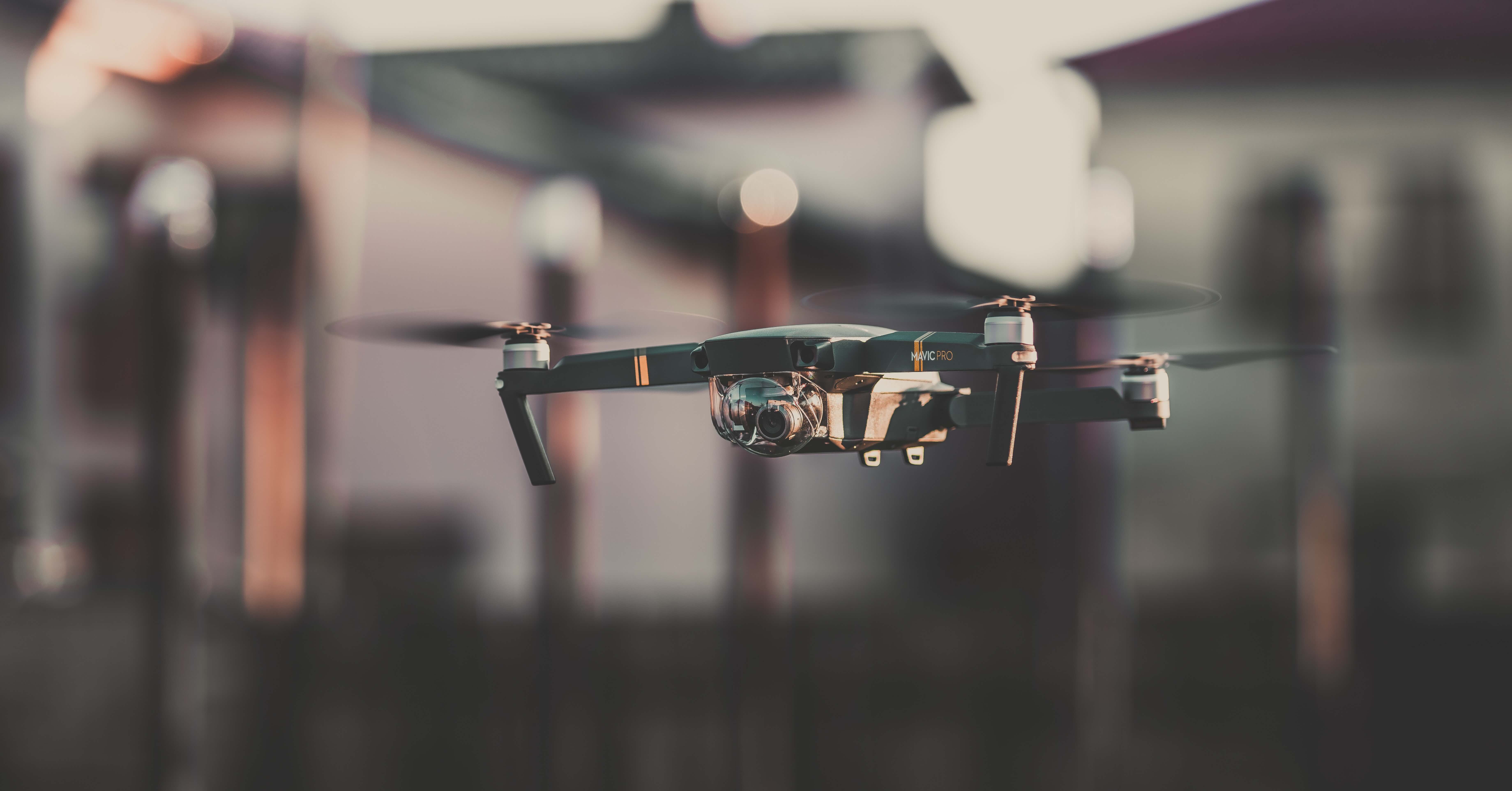
3. Supersonic Aircraft: Certain supersonic aircraft have the capability to fly at altitudes higher than 80,000 feet. For example, the North American X-15, an experimental rocket-powered aircraft, reached altitudes above 80,000 feet during its test flights.
4. Stratospheric Balloons: While not traditional aircraft, stratospheric balloons are capable of reaching altitudes well above 80,000 feet. These large, unmanned balloons filled with helium or hydrogen can carry scientific instruments, experiments, or imaging systems for various research purposes.
It's important to note that reaching altitudes of 80,000 feet or higher requires specialized aircraft designs, including factors such as aerodynamic stability, cabin pressurization, and life support systems to enable pilots or researchers to operate at extreme altitudes. Additionally, the operational environment at such altitudes presents challenges such as extremely low temperatures, low air density, and limited oxygen availability.
It's worth mentioning that altitude capabilities can vary depending on factors such as aircraft design, purpose, and technological advancements. Advances in aerospace technology continue to push the boundaries of high-altitude flight, enabling aircraft to operate at even more extreme altitudes for various research, reconnaissance, or experimental purposes.

What To Do If A Drone Is Watching You ?
If you believe you are being observed or monitored by a drone and feel uncomfortable or concerned about your privacy, here are some steps you can consider taking:
1. Assess the Situation: Remain calm and assess the situation to determine if the drone's presence is genuinely intrusive or potentially threatening. Consider factors such as its proximity, altitude, behavior, and the surrounding environment.
2. Document the Incident: If possible, record or document the details of the incident, including the date, time, location, and any identifiable features or markings on the drone. Taking photos or videos can help provide evidence if you need to report the incident later.

3. Maintain Your Privacy: Move to an area that offers more privacy, such as indoors or to a location where the drone's line of sight is obstructed. If you are concerned about being filmed or photographed, ensure you are in an area where you have a reasonable expectation of privacy.
4. Don't Interfere with the Drone: Avoid attempting to physically interact with the drone, such as trying to knock it down or damage it. Interfering with a drone can potentially lead to legal issues or escalate the situation.

5. Identify the Operator: If it is safe to do so and you can determine the drone operator's location, try to identify the operator or gather any available information about their identity. This can be useful when reporting the incident to authorities.
6. Report the Incident: Contact your local law enforcement agency and report the incident, providing them with all the details and any evidence you have gathered. They can assess the situation, investigate further if necessary, and provide guidance on the appropriate steps to take.
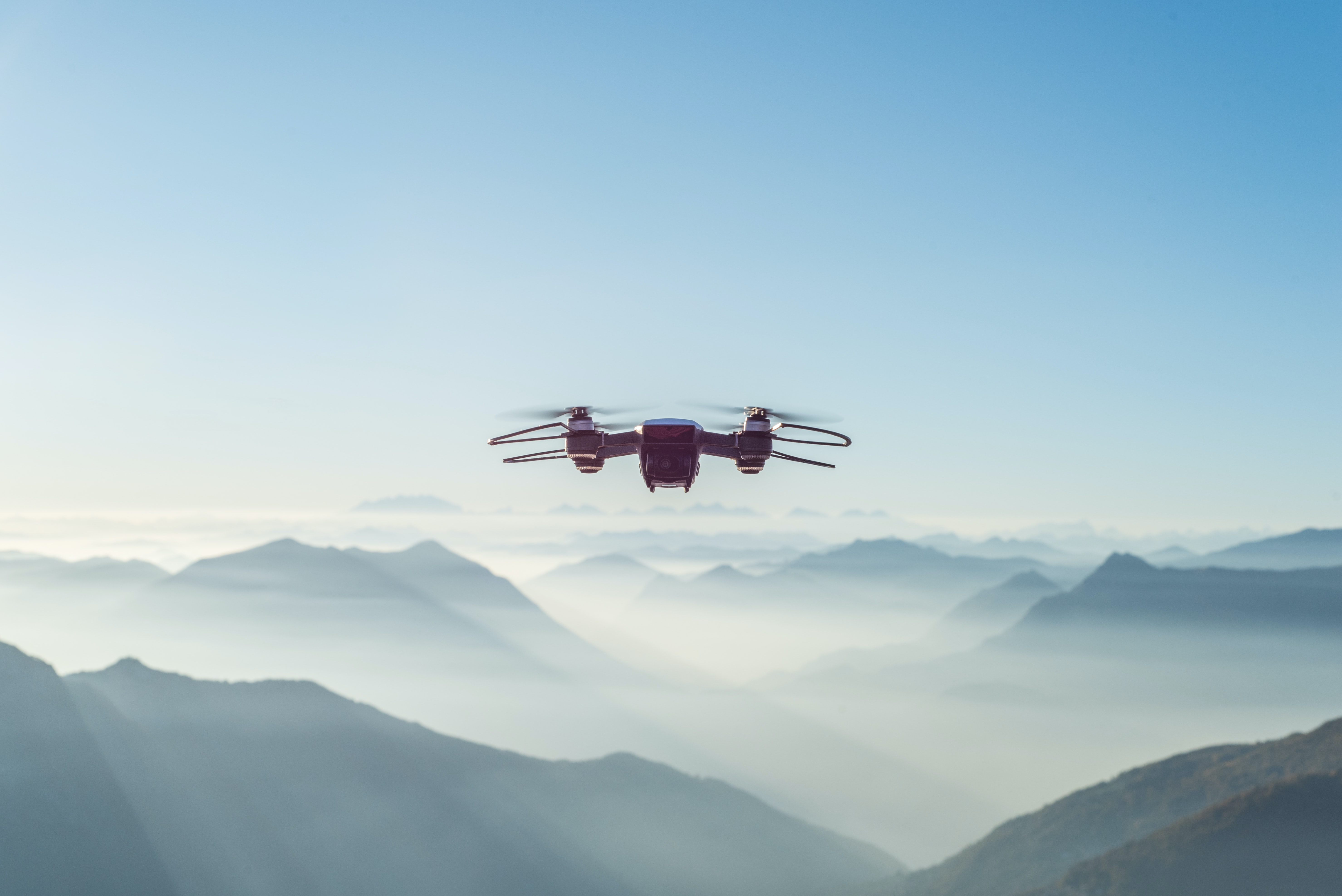
7. Consult Local Regulations: Familiarize yourself with the regulations governing drone operations in your country or region. If you believe the drone flight is in violation of those regulations, provide that information to the authorities when reporting the incident.
8. Seek Legal Advice: If you believe your privacy rights have been violated or you experience ongoing concerns regarding drone surveillance, you may consider consulting legal counsel specializing in privacy or aviation law to understand your rights and potential courses of action.
Remember that each situation can be unique, and the appropriate actions may vary based on local regulations and circumstances. It's important to prioritize your safety, well-being, and privacy while cooperating with law enforcement and relevant authorities to address the issue appropriately.
Are There Anti Drone Weapons ?
Yes, there are anti-drone weapons and countermeasures designed to mitigate the threat posed by unauthorized or malicious drone activities. These anti-drone technologies are developed to detect, track, disable, or neutralize drones in various scenarios. Here are some examples of anti-drone weapons and countermeasures:
1. Radio Frequency (RF) Jammers: RF jammers emit signals that disrupt the drone's control and communication systems, rendering it unable to receive commands or transmit data. These jammers can disrupt the drone's remote control link, GPS navigation, and other wireless communications.
2. Anti-Drone Nets: Anti-drone nets are physical nets deployed from ground-based systems or other platforms to capture and immobilize drones mid-flight. The nets can entangle the drone's propellers, rendering it inoperable or causing it to crash.
3. Drone-Focused Cyber Technologies: Some anti-drone systems focus on targeting the drone's communication protocols or GPS systems using specialized cyber technologies. By exploiting vulnerabilities in the drone's software or disrupting its signals, these systems can disrupt or disable the drone's operations.
4. Directed Energy Weapons: Directed energy weapons use concentrated energy beams, such as lasers or microwave systems, to disable or damage drones. These weapons can disrupt the drone's flight systems, sensors, or even physically burn the drone's critical components.
5. Anti-Drone Firearms: Some firearms are specifically designed to shoot drones out of the sky. These firearms often use specialized ammunition or projectiles to disable or destroy the drone's components.
6. Anti-Drone Drones: Another approach to countering unauthorized drones is using specialized drones designed to intercept and neutralize them. These anti-drone drones can physically collide with the target drone, deploy nets, or use other means to disable or control the intruding drone.
It is important to note that the use of anti-drone weapons and countermeasures may be subject to legal restrictions and regulations in different jurisdictions. In many cases, their use is limited to authorized personnel, such as law enforcement, military, or security agencies, and may require specific permissions or clearances.
Furthermore, it's worth mentioning that the development and deployment of anti-drone technologies are continually evolving as drone technology advances. New and improved countermeasures are being researched and developed to address evolving threats and ensure the safe and secure operation of airspace.
What Happens If You Fly Over 400 Feet ?
Flying a drone over 400 feet (121 meters) above ground level (AGL) in many countries, including the United States, can potentially violate aviation regulations and lead to various consequences. Here's what can happen if you fly a drone over 400 feet:
1. Violation of Aviation Regulations: In most jurisdictions, drone operators must adhere to specific regulations set by the aviation authority. Exceeding the altitude limit of 400 feet is considered a violation of these regulations. Depending on the severity of the violation and local laws, penalties can range from warnings and fines to legal consequences.
2. Safety Risks: Flying a drone at higher altitudes increases the risk of potential conflicts with manned aircraft, such as airplanes or helicopters, that operate in controlled airspace. These conflicts pose a significant safety risk to both the drone operator and other airspace users. Authorities enforce altitude limits to maintain safety and prevent accidents.
3. Interference with Aviation Operations: Drone flights above 400 feet can potentially interfere with aviation operations, including airports, helipads, or other critical airspace areas. Unauthorized drones at higher altitudes can disrupt or impede the movement of manned aircraft, leading to delays or even suspension of flights. Authorities take such incidents seriously and may investigate and prosecute offenders.
4. Damage to Reputation of Drone Community: Irresponsible drone operations, such as flying over the altitude limit, can negatively impact the public perception of drones and the entire drone community. It can contribute to increased public scrutiny, tighter regulations, and heightened restrictions on drone operations.
5. Legal Consequences: In some cases, repeatedly violating aviation regulations or engaging in reckless drone operations can lead to legal consequences. Depending on the jurisdiction, these consequences may include fines, imprisonment, or other penalties.
It's important to note that regulations can vary between countries and regions, so it's essential to familiarize yourself with the specific rules and regulations in your location. Compliance with regulations helps ensure safety, prevents airspace conflicts, and avoids potential legal consequences. Always consult local aviation authorities or seek legal advice to understand and adhere to the drone regulations applicable to your area.
What Happens If A Drone Hits You ?
If a drone were to collide with a person, it could potentially cause injuries or harm, depending on various factors such as the size and weight of the drone, the speed of impact, and the specific area of the body affected. Here's an overview of the potential consequences:
1. Physical Injury: Drones can cause various types of injuries upon impact. Smaller drones or those made of lightweight materials may cause minor cuts, bruises, or abrasions. However, larger drones or those with heavy payloads could cause more severe injuries, including lacerations, fractures, or even traumatic head or spinal injuries.
2. Eye Injuries: A drone collision could result in serious eye injuries. The propellers or other components of the drone could potentially cause damage to the eyes, leading to vision impairment or even permanent loss of sight.
3. Emotional Distress: Being involved in a drone collision can lead to emotional distress, fear, or psychological trauma. The unexpected nature of the incident and the potential for harm can have long-lasting effects on an individual's well-being.
4. Legal Consequences: If a drone collision results in injuries, legal consequences may follow. Depending on the circumstances, the drone operator could be held responsible for negligence or failure to comply with aviation regulations. The injured party may choose to pursue legal action seeking compensation for medical expenses, pain and suffering, and other damages.
It's important to note that the likelihood of a drone collision causing harm to a person is relatively low when responsible drone operation guidelines are followed. Drone manufacturers and regulatory authorities typically establish safety standards and guidelines to minimize the risks associated with drone flights, including avoiding flying over people or in congested areas.
If you find yourself in a situation where a drone collision has occurred, it's important to seek immediate medical attention and document the incident with photos, videos, or witness statements if possible. Reporting the incident to local authorities can help in investigating the incident and determining liability.
Preventative measures such as education, awareness campaigns, and enforcement of regulations can contribute to mitigating the risks associated with drones and ensuring safe drone operations.
Click here for more information FPV Equipment